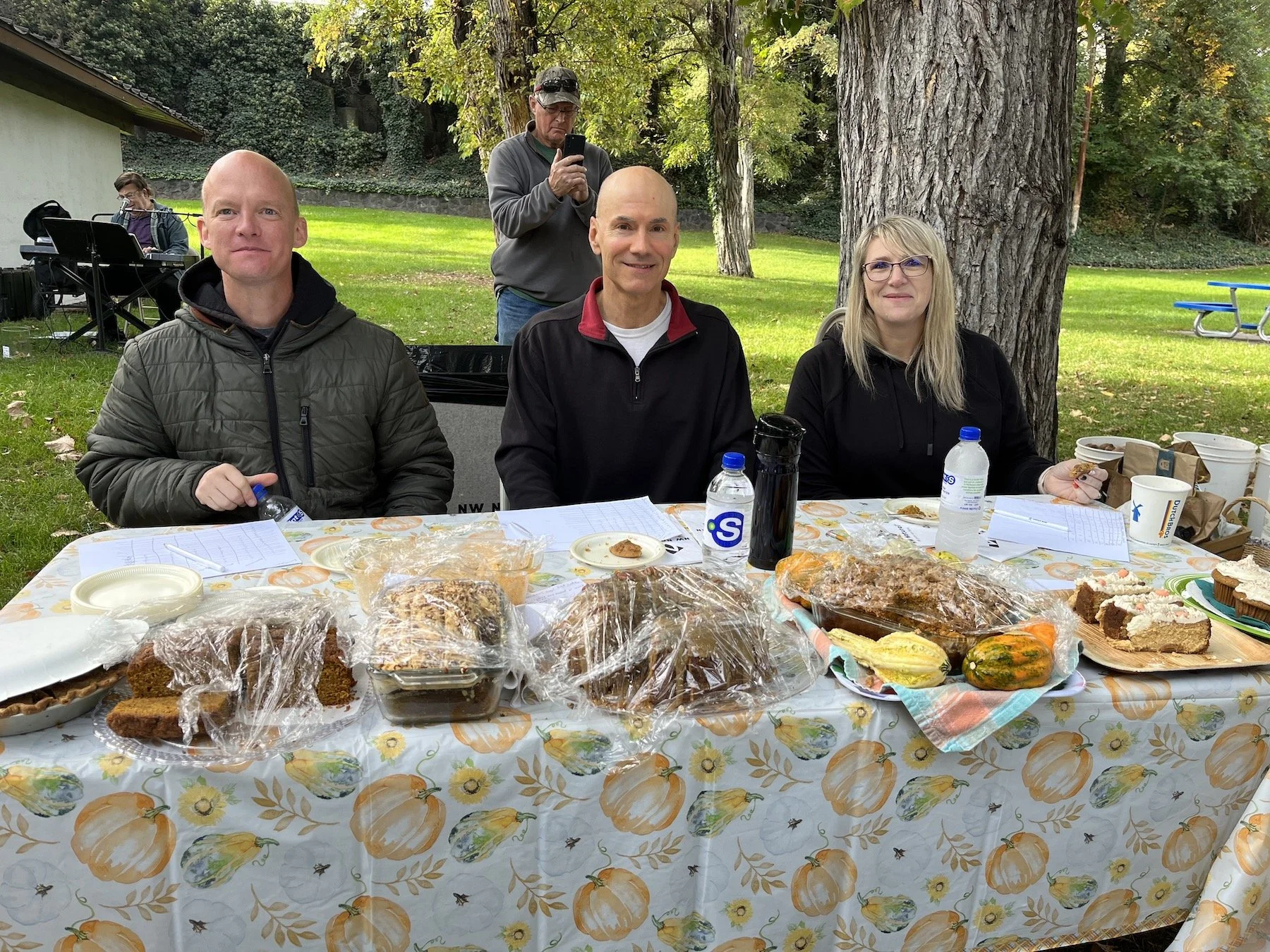Column: Requiem for a ponderosa; heritage tree lost in TD
This Ponderosa near the corner of Trevitt and Third streets in The Dalles did not make it out alive this summer. It’s demise did not go unnotice by Janet Kavanagh of The Dalles.
By Janet Kavanagh
The Dalles, Ore., Oct. 16, 2023 — We’ve had many trees die in The Dalles and its environs this summer, with the sustained drought and high temps these past years.
This tree of note that I especially mourn, predates the Anglo development of the historic Trevitt addition. It’s far older than the 1890s Victorian mansion below it, for sale now for over a year and vacant. It reigns still, needles intact and brown, dead, on the steep slope of the basalt cliff to the south, close to the property line. This majestic tree may well have been 300 years old or more. Ponderosas can live 500 years.
Imagine its history: a pine cone sprouting before the Lewis and Clark expedition opened up the West that altered the lives permanently for the Native Americans in the area. Surviving until now, this grand and regal ponderosa witnessed the development of The Dalles, its neighboring wild lands being developed and families moving in. The stream and small waterfall that once nurtured it, where Trevitt St. now descends steeply to W 3rd St and Mill Creek Bridge, is long gone. Neighbors on 7th St. near Trevitt have shared that there was a pond before their houses were built in the early years of the 20th century and some of their basements still get water in big rains.
The death of this tree hit so hard- its majesty, girth, height, and symmetry are so beautiful, even in death. No one in adjacent houses, or the realtor, who could have saved it by noticing its struggle and providing water this summer, did. Native trees in our community can’t all keep up with man-caused climate change. It’s our responsibility to nurture them through drought. I’m reminded of the AA Milne poem about the king’s wish for a little bit of butter for his bread. This ponderosa needed a bit of water for its roots.
This historic ponderosa didn’t need to die.
It’s the result of our inattention and insensitivity toward nature around us. It died suddenly in less than a month, from green to brown, a victim of drought. It wasn’t the bark beetle. We have learned in recent years how mother trees communicate and nurture other nearby trees through their roots and fungal networks. A nearby, smaller ponderosa is not quite dead yet. I think of the generosity of this ponderosa perhaps giving its last breath to help sustain the younger.
So come by and admire and honor this tree — the beautiful statuesque form of this ancient ponderosa, still majestic in death. Bear witness to its history and its legacy for those of us who will remember its presence, and may we appreciate and nurture our remaining heritage trees.
Support Local News
Available to everyone. Funded by readers.


